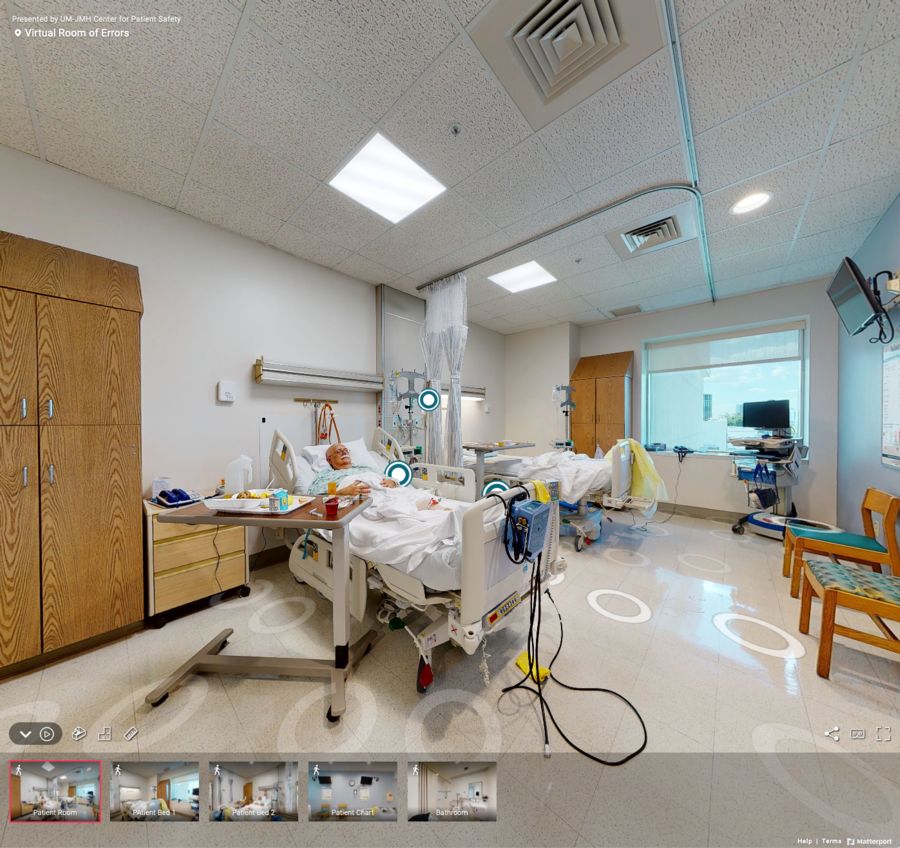2022 FSA Podium and Poster Abstracts
P024: A NEW APPROACH TO THE ROOM OF ERRORS: A 3D VIRTUAL-TOUR TOOL TO SPOTLIGHT PATIENT SAFETY HAZARDS
Kristen Mascarenhas, BS; Maureen Fitzpatrick, MSN, APRN, BC; Roxanna Araya, BA; Alecia Stein, MD; Joni Maga, MD; University of Miami
Introduction/Background: Over the past years, simulation activities have been effective tools in teaching situational awareness to improve patient safety training in healthcare settings. The COVID-19 pandemic forced the discontinuation of these in-person sessions. We describe our solution to this challenge: an online interactive 3D virtual tool, titled the “Virtual Room of Errors.” In this activity, learners independently navigate a virtual hospital room to identify over 45 selected hazards. This tool is an accessible, feasible, and effective method of improving healthcare workers’ situational awareness of preventable hazards at a time when patient safety in hospitals is of utmost importance.
Methods: A hospital room on a medical-surgical unit was secured to create the Virtual Room of Errors activity. A standardized patient was brought in, and errors were set up throughout the patient room. Healthcare professionals then toured the room and provided feedback. Matterport, Inc. technology was used to capture room details that would become embedded in the 3D virtual room (Figure 1). Participants accessed the room through a link and listed hazards they identified while exploring the room.
Results: Between March 2021 to September 2021, a total of 321 responses were collected. Participants who completed the activity included both hospital staff and medical students. The mean number of hazards listed was 20.0, ranging from 2 to 60. The upper range of 60 was due to participants entering duplicate hazards. The median was 18, and the mode was 12. The standard deviation of responses was 11.8. Sample responses to hazard identification are detailed in Table 1.
Participants provided feedback on the activity, with many learners noting that the activity increased learner engagement and situational awareness. Participants noted the convenience of the activity being virtual and positively responded to the interactive nature of the training. The feedback also highlighted the tool’s effectiveness in training learners’ eyes to identify small details that could pose significant risk to the patient’s safety.
Discussion/Conclusion: In targeting situational awareness, the Virtual Room of Errors holds potential to reduce dangerous errors in the operating room, especially in a highly precise field such as Anesthesiology. The process of putting a patient under anesthesia requires many steps and an overlooked hazard can have life-or-death consequences. One hazard in our Room of Errors included the patient having a bandaged left knee despite the chart stating that he was having a right knee operation. This type of error in the operating room is costly, so training healthcare professionals to review these possible mistakes is imperative. Situational awareness gained from this activity can hopefully prevent major errors in the operating room.
As we approach the third year of the COVID-19 pandemic, patient safety remains a top priority within the healthcare system, though teaching this principle remains challenging in the virtual environment. Our tool uses 360-degree video technology to optimize learning through a cost-effective, accessible, and easy-to-implement virtual simulation room. We believe that our virtual Room of Errors is an important tool to improve situational awareness and prioritize patient safety for many years to come.
Figure 1
